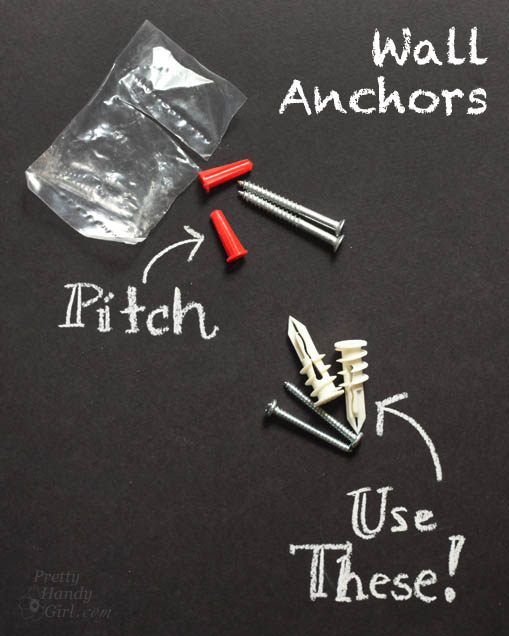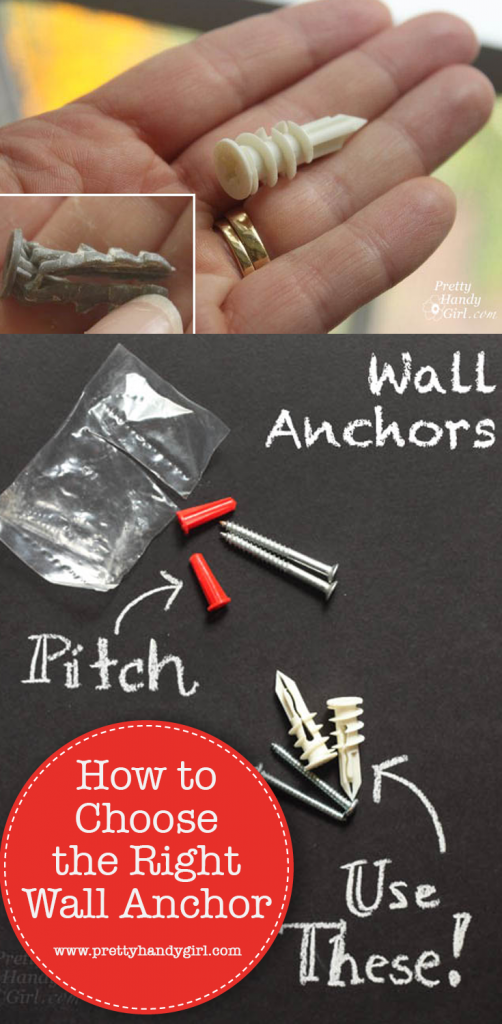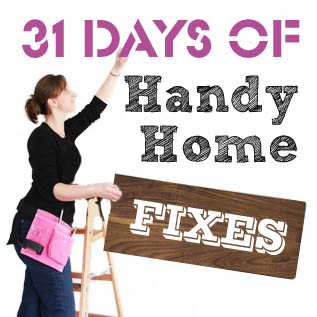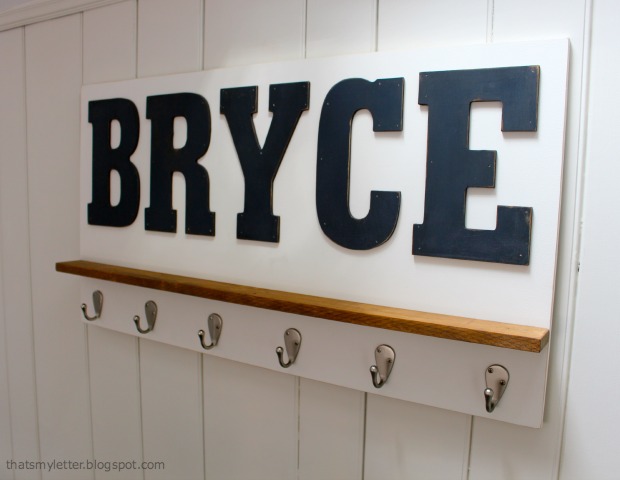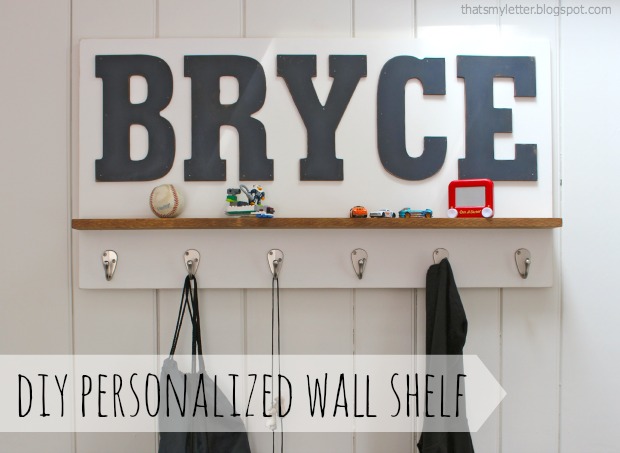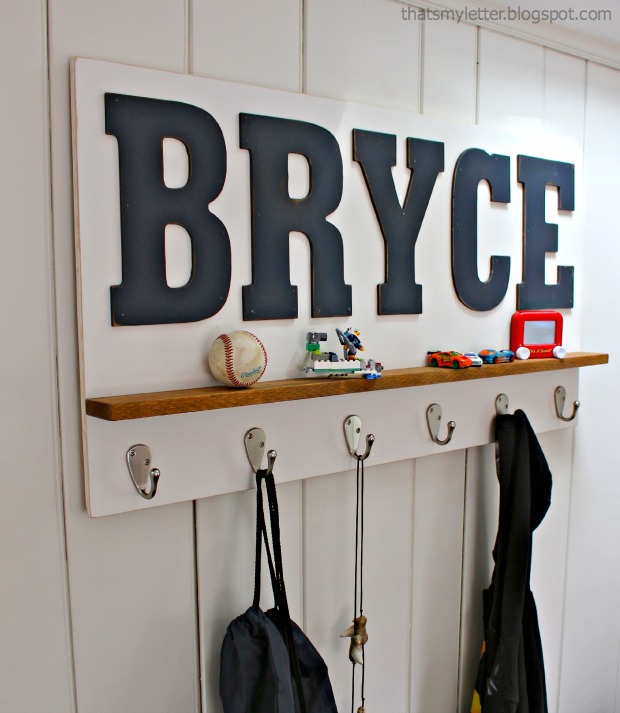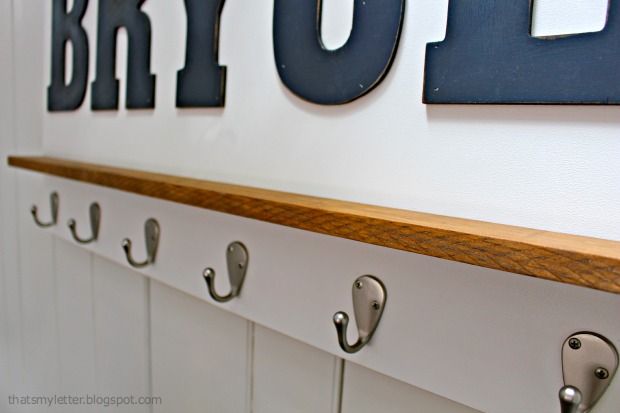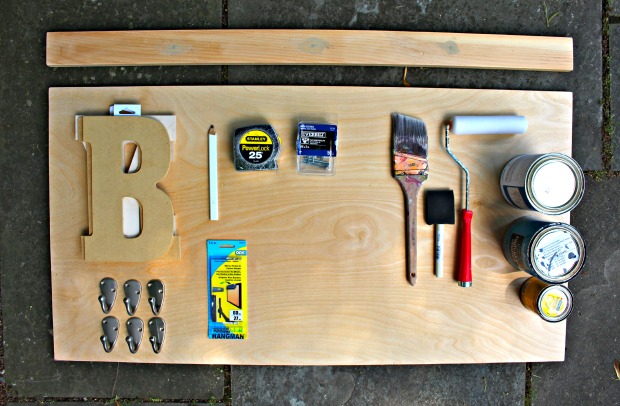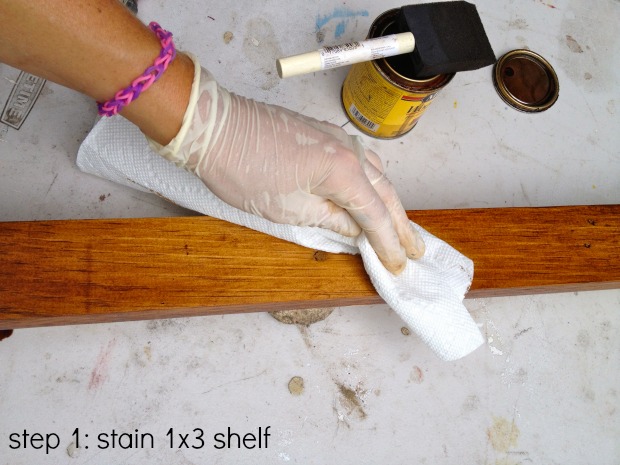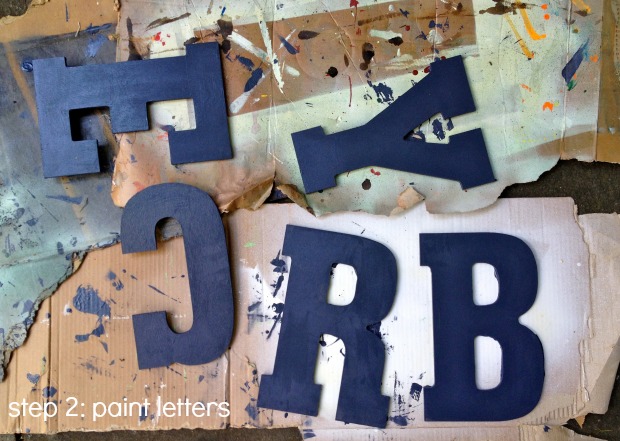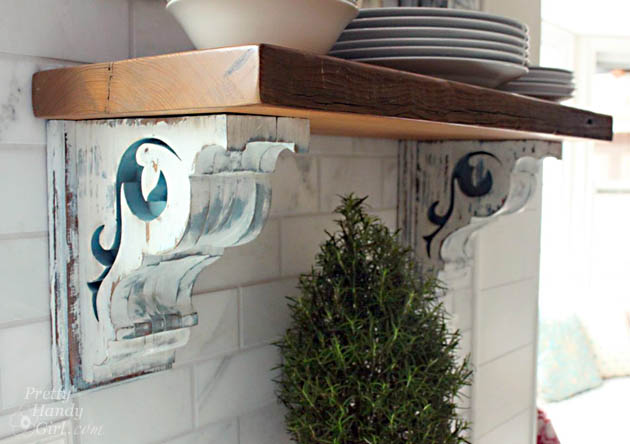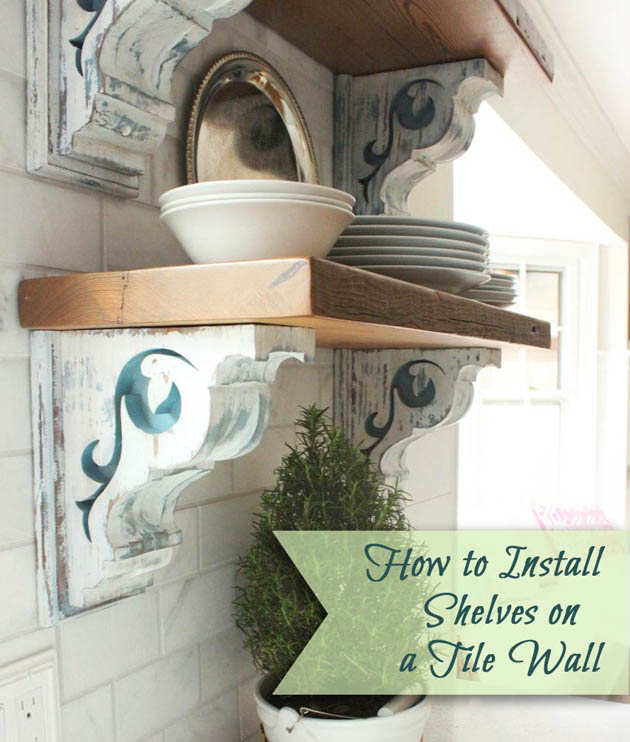Need a desk but lack floor space or the funds to buy a desk? This Wall-Mounted Desk tutorial will meet your needs! Plus, you can customize the length to meet your needs.
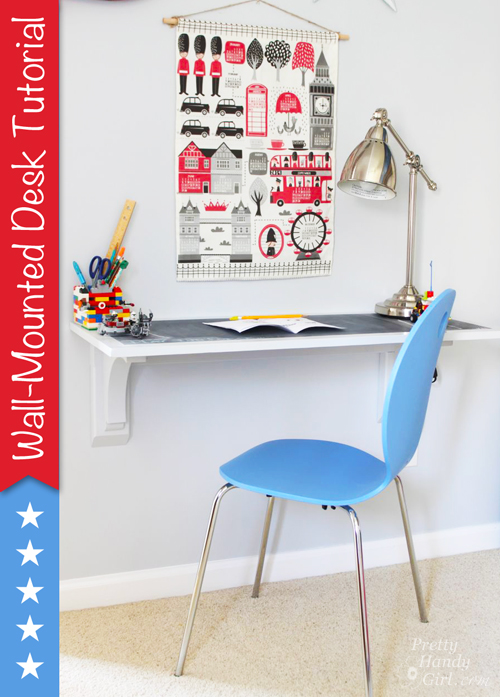
Wall Mounted Desk Tutorial
Hey, I hope you had a fabulous weekend! Was it productive? Full of DIY activities? Well, I’m back with a tutorial for building a wall-mounted desk. The great thing about a desk that is wall-mounted is it can be small or large and it won’t take up any floor space! This gives a nice clean look and makes the room feel larger. Plus, the materials will almost certainly cost less than buying a desk.
My son is starting to have more homework in school. (I didn’t realize that first grade was the new 3rd grade!) I figured soon enough he’s going to need a spot to sit and work on homework. Plus, he’s an avid Lego builder and this makes a great surface for him to build on.
Materials:
- Finish grade plywood (my desktop is 16″ x 40″)
- Painter’s Tape
- 1 – 2″ x 4″ x 93″
- 2 – 9.5″ x 9.5″ bird’s mouth brackets
- 4 – 3″ cabinet mounting screws
- Paint
- Paint brush
- Drill
- Drill bits
- Level
- Pencil
Instructions:
Begin by assessing where you want to mount your desk. For better perspective, you can outline the desk area with painter’s tape on the floor.
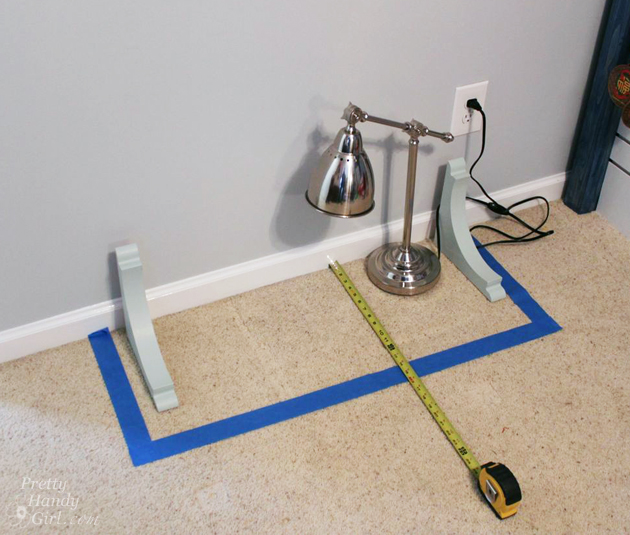
Cut your finish grade plywood to size. Using the Kreg Rip Saw with my miter saw is much easier than hauling out the table saw and getting as assistant to help lift the plywood. If you put a piece of rigid foam insulation underneath, you can cut almost anywhere! Just set your saw blade depth slightly below the plywood.
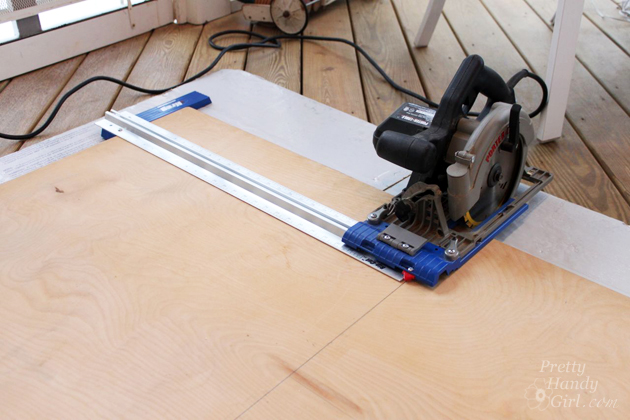
Cut your 2″x4″ stud 4″ narrower than the length of your desk top surface. (My desktop is 40″ long, therefore my mounting stud is 36″ long.) Locate the studs in your wall. Mark their location.

Pre-drill holes in the mounting board at the stud locations. Use a small bit slightly narrower than your screws. Then use a larger bit the width of your screw head to create a countersink hole. Drive the cabinet mounting screws into one end of the mounting board and into the stud. Use a level to make sure your mounting board is level, then drive the additional mounting screws into the other studs.
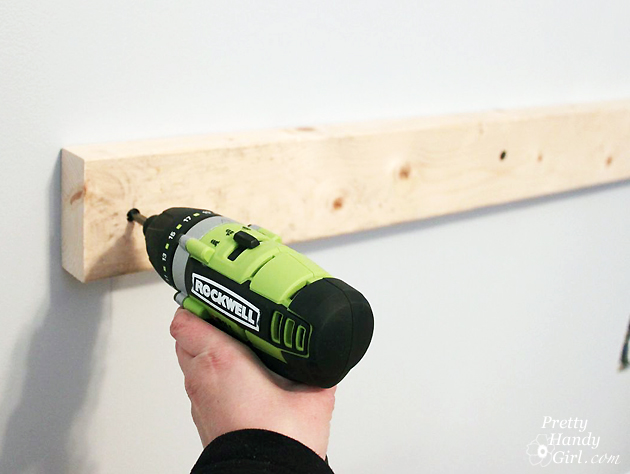
Cut two pieces of 2″x4″ at 8″ long. These will create the supports for the shelf brackets. For a clean look, bevel the end at a 45 degree angle when you cut them. Attach the 2″ x 4″ pieces below each end of the mounting board as shown below.
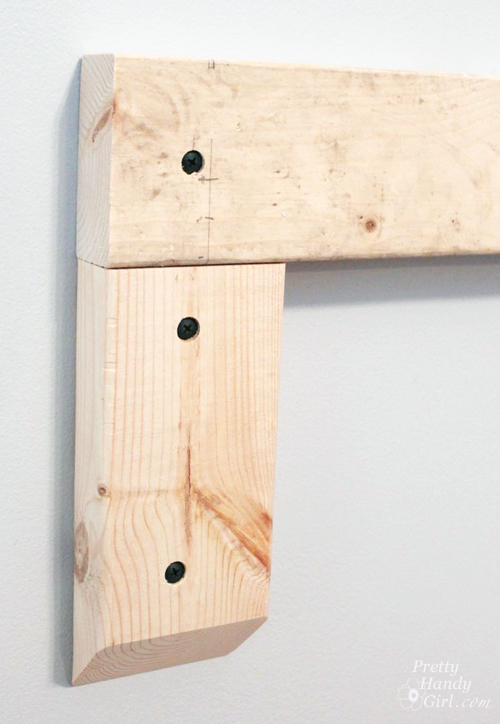
Your mounting boards should look like this:
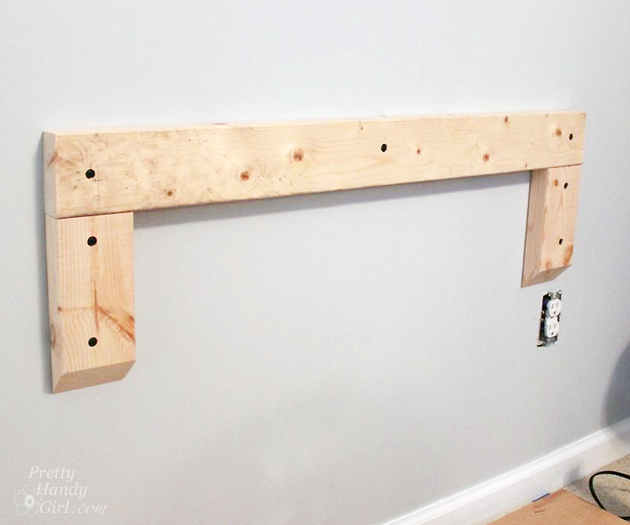
Set two small screws into the shelf bracket keyholes. Line the bracket up with the top of the mounting board and center it on the vertical supports already attached to the wall. Make a pencil mark where the screws need to be set.
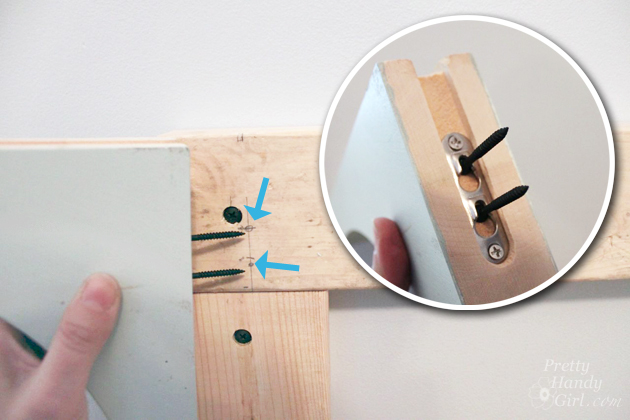
Use the pencil to mark the depth of the keyholes on the screws so you know how deep to drive the screws into the bracket support.

Attach the small screws to the vertical support where the pencil marks were and drive them to the point where you marked on each screw.
Slip the bracket onto the screws.
For added support, pre-drill one hole through the top of the bracket and into the mounting board. Pre-drill a second hole through the bird’s eye bracket at the narrowest point.
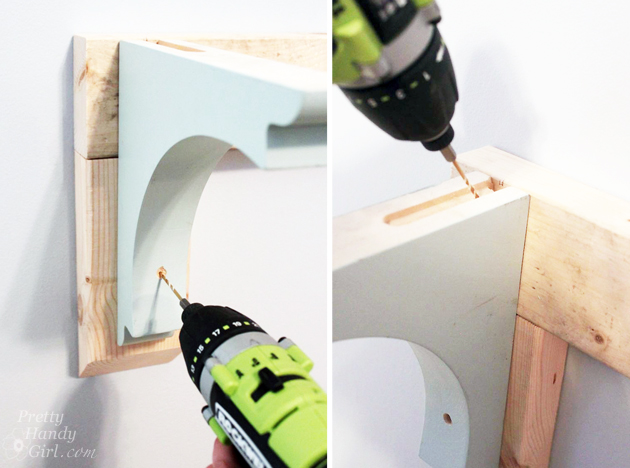
Drive screws into the two pre-drilled holes to further secure the shelf brackets to the mounting boards.

Repeat for the second bracket.
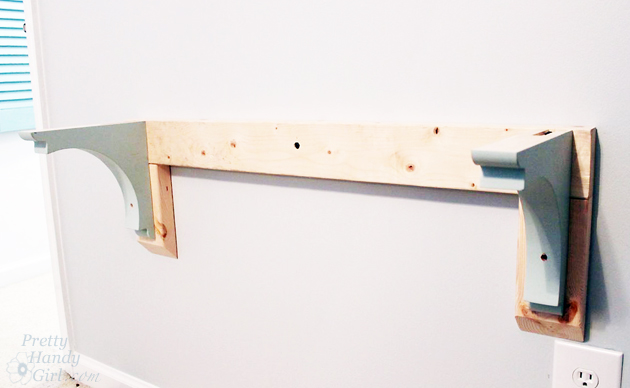
Lay your desktop surface on top of the brackets. You can either drive small screws through the top of the desk and into the mounting board. Or drive a small screw up through the underside of the bracket and into the desktop. I prefer the latter because you won’t have to wood putty the desk surface.

Wood putty all your holes. Allow the putty to dry and sand the putty smooth. Paint your brackets, mounting boards, and desktop. I chose to paint my desktop beforehand with a chalkboard surface.
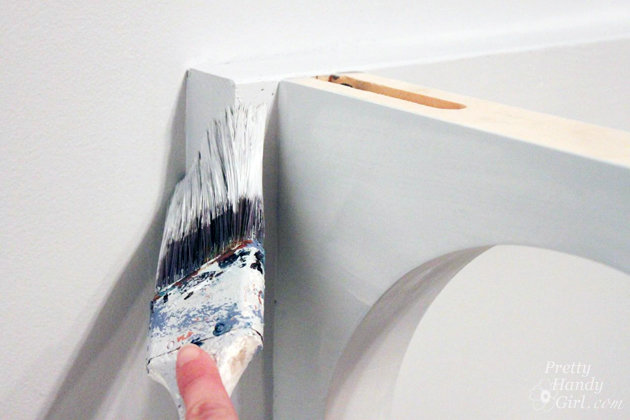
Let the paint dry. If you want to protect the desk surface, you may choose to paint a few coats of polycrylic on top.
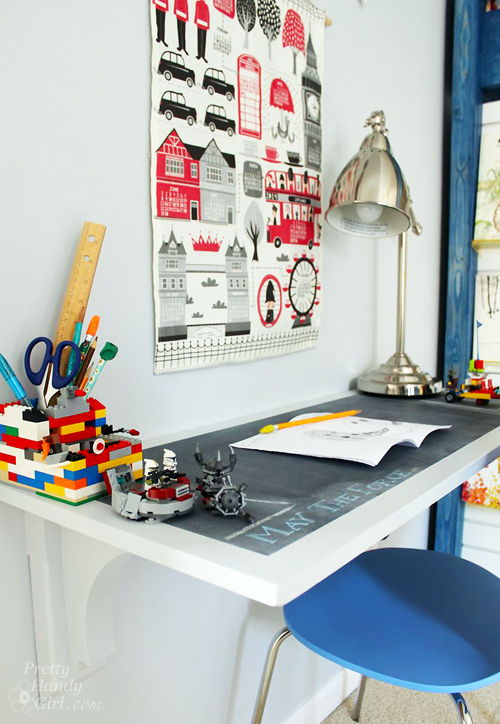
And my son has a spot to do homework, legos, or create a little book.

Don’t you just love his lego pencil holder he created?! I think he needs to start an Etsy store ;-).
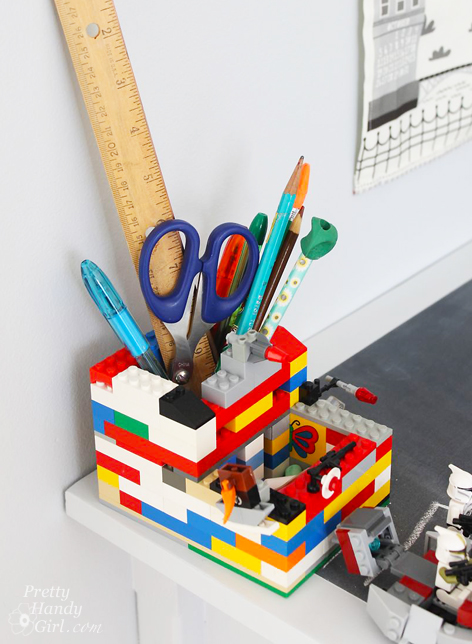
I had fun decorating the wall with some vintage signs and an adorable London themed tea towel calendar from Spoonflower. Making tea towel calendars every year in November/December has been a tradition I started over a year ago. We anxiously await the release of the newest calendar designs on Spoonflower.
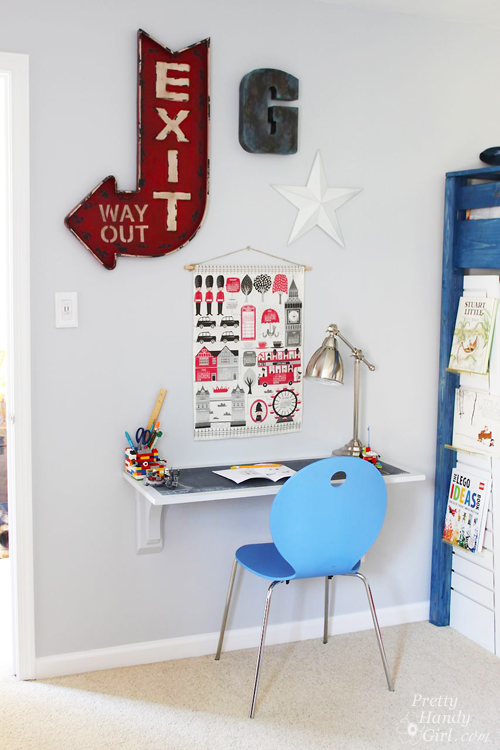
Source List:
I hope you found this tutorial helpful. It was an easy solution for my son’s room. Best of all, you can expand the width, but if you do add more brackets.
 Pin for later!
Pin for later!
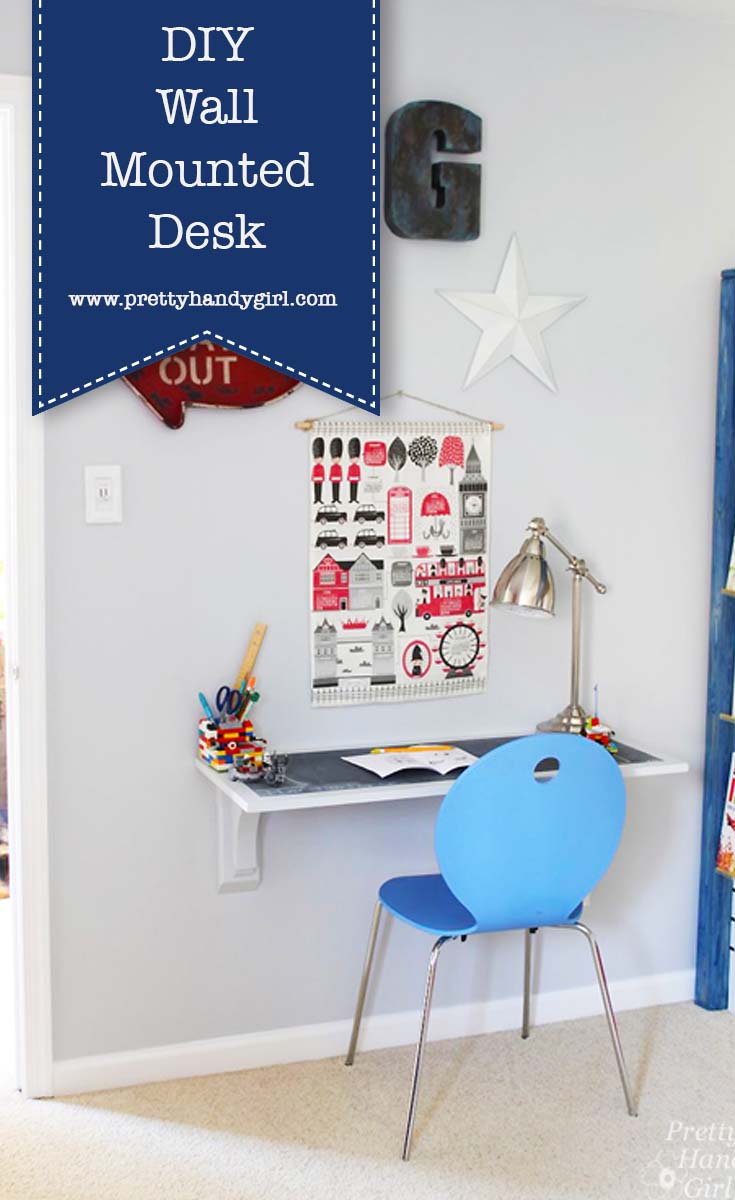
If you liked this tutorial, you might also like this inexpensive desktop for $40!

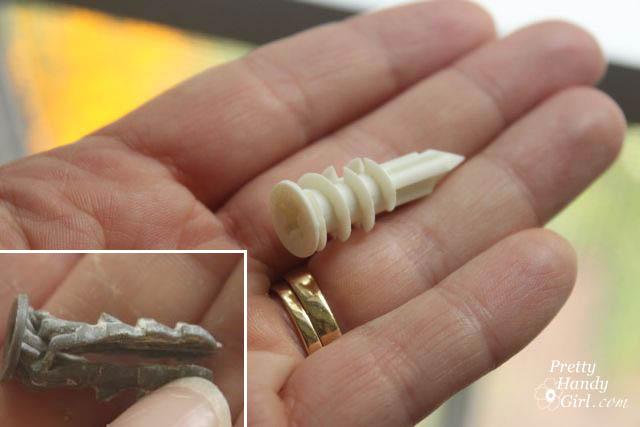
because they are easy to drill into drywall and you can remove them fairly easily with a phillips head screwdriver. There are several other brands and types of wall anchors that will work just as well. When purchasing wall anchors, pay attention to the weight limit and wall types they are designed for.
